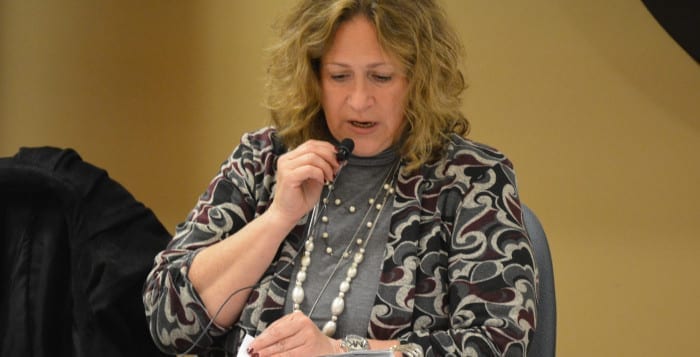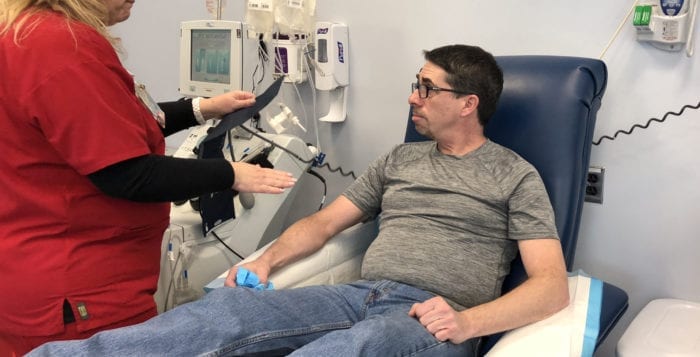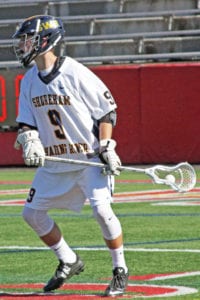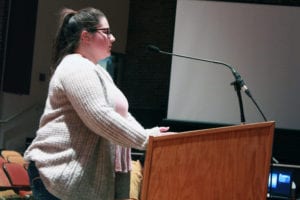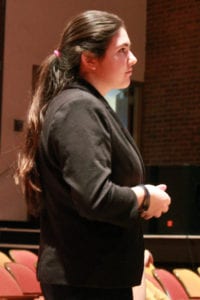Another end to the school year brings another round of budget votes. Local school districts adopted 2018-19 budgets saw increases with attempts to expand programs, repair infrastructure and increase security measures around campus.
All budget and board elections votes will take place May 15.

Shoreham-Wading River
The Shoreham-Wading River board of education adopted a $74,776,072 budget, an increase of $701,500 from the 2017-18 school year.
“The district’s exceptional programs, and the performance of its students academically, artistically and athletically are a great source of pride to our community,” Superintendent Gerard Poole said in an email. “The 2018-19 proposed budget fully maintains all current student programs and includes additional new student offerings.”
Poole said new offerings include high school electives and clubs in elementary and secondary school. The expanded budget also allocates for hiring a new middle school psychologist. The district plans to contract with an outside agency for any problems that go beyond the work of in-house psychologists.
The tax levy, or the money a district raises through property taxes to fund its budget, has dropped half a percent, a $269,775 total decrease from last school year.
In an April 18 presentation on the proposed budget, Assistant Superintendent for Finance and Operations Glen Arcuri said that the tax levy decrease is due to an increase of state aid, specifically building aid for renovations.
“The district spent money, successfully completing them as aggressively as the district was able to,” Aruci said. “This allowed the money to be returned back to the taxpayers because the formula requires the district reduce the tax levy by the return of the building aid.”
The budget also expands elementary enrichment clubs, the middle school’s chromebook program, security measures — including an anonymous reporting app — and includes money for maintenance projects and one-time equipment purchases like two new maintenance-work vans.
A budget hearing will take place May 1 at 7 p.m. at Shoreham-Wading River High School. The budget vote will take place May 15 from 7 a.m. to 9 p.m. in the Shoreham-Wading River High School auxiliary gym, located at 250A Route 25A in Shoreham.

Rocky Point
The Rocky Point board of education adopted a $86,128,785 budget, an increase of $2,842,439 from the 2017-18 school year.
The largest increases came from teacher benefits and new general education initiatives, like STEM initiatives, new Advanced Placement courses and special education services.
“The proposed budget is one that was developed with an eye toward our district’s mission – to develop each child’s full potential in a nurturing and supportive, student-centered environment in order to provide a foundation for lifelong learning,” Rocky Point Superintendent Michael Ring said in an email. “Our budget planning process also placed a strong focus on the fiscal health of our district and the commitment we have to taxpayers to operate in the most financially-efficient manner possible.”
The budget includes a 3.1 percent tax levy increase at $1,536,959 from last year. Board officials said that the increase stays within the tax levy increase cap.
“We kept things current,” board Vice President Scott Reh said. “We didn’t cut anything. We kept the programs in place and I think we were very responsible.”
A budget hearing will take place May 1 at 7 p.m. in the High School auditorium. The budget vote will be May 15 from 7 a.m. to 9 p.m. in the Rocky Point High School gym, located at 82 Rocky Point Yaphank Rd. in Rocky Point.

Miller Place
The Miller Place board of education adopted a $72,685,864 budget, an increase of $1,495,189 from the 2017-18 school year.
“The budget increase at 2 percent maintains all current academic programs, clubs and athletics, as well as maintaining our capital project planning, and we’re pleased we’re presenting that within the tax cap,” Superintendent Marianne Cartisano said.
Under the proposed budget the tax levy will see a 2.8 percent increase of $1,261,274 from the previous year. The increase stays within the tax levy increase cap, meaning a cap-piercing vote won’t be necessary.
The proposed budget plan include a $530,000 transfer to capital funds, boasts the inclusion of new initiatives, including new high school courses Chemistry Honors, Virtual Enterprise — a course on learning about global business and enterprise — and Engineering Design using VEX Robotics, which design kits used to design automated devices and robots.
“They’re there to address interest in different programs,” board President Johanna Testa said of the new classes. “Science Technology Engineering and Math is a big interest in our community — robotics falls right into that area. It’s trying to be timely and up-to-date with what’s going on in our world.”
A budget hearing will take place May 8 at 8 p.m. at Miller Place High School. The budget vote will be May 15 from 6 a.m. to 6 p.m. in the North Country Road Middle School gym, at 191 North Country Rd. in Miller Place.

Mount Sinai
The Mount Sinai board of education adopted a $60,203,745 budget, an increase of $931,220 from the 2017-18 school year.
Earlier projections put the total budget at $60,469,490, but an increase in state aid, as well as a number of retiring Mount Sinai teachers. have brought the total down.
The largest increases in this year’s budget came from security improvements, including finalizing a bid to hire armed guards. One of the top bids is from the Hauppauge-based security firm Pro Protection Security Inc.
“We just feel that it’s important to have anything that’s a deterrent,” Superintendent Gordon Brosdal said. “When they’re not just in the building, but they’re actually checking ID’s at the gate, it gives people a second thought.”
The budget vote will also include two propositions to be voted on. One is a $750,000 increase to the capital reserve, and the other is a $5,000,000 capital project, coming from the unassigned fund balance, to pay for partial renovations to the high school roof, as well as improvements to the turf, track, bleachers, press box, sidewalks, nets and concrete plaza, while also enhancing security features like perimeter fencing and gates around the school property.
There is a tax levy increase of 1.95 percent, an increase of $766,589 from the previous year.
“I am hopeful and optimistic that it will pass,” board President Lynn Capobianco said. “I think it’s a fiscally sound budget.”
Capobianco was concerned that residents voting on the two other propositions would misunderstand what they are voting for.
“The capital project funds do not come out of the budget,” she said. “It will not raise the tax levy.”
A budget hearing is scheduled for May 8 at 8 p.m. at the middle school auditorium. The budget vote will be May 15 from 6 a.m. to 9 p.m. at Mount Sinai Elementary School, located at 118 North Country Rd. in Mount Sinai.
This version corrects the time and place of the Mount Sinai School District budget vote.

